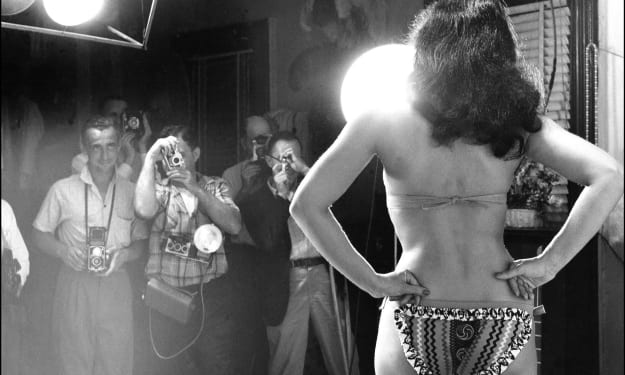Wanderers on the Earth
Fernand Cormon’s Cain and the endurance of a French masterpiece

There is a persistent Left Bank legend that, when President François Paul Jules Grévy first set eyes of Fernand Cormon’s new work at the opening of the 1880 Paris Salon, he immediately ordered the artist be taken to the Palais de la Légion d’Honneur to receive France’s highest order of merit.
Certainly, Cormon became an Officer in the National Order of the Legion of Honour that year, but the details seems too perfect, too utterly French, to be so precise.
But when you stand in front of Cain for the very first you believe, without a shred of doubt, it couldn’t have happened any other way.
It isn’t the scale that hits you first. Sure, it’s big. Seven metres wide. But taking that in is like standing on the beach and trying to say how wide the ocean is. In fact, it isn’t any one thing at all, it’s everything. Every brushstroke, every shadow, every expression, every intricate detail, hit you all at once.
The subject itself — the expulsion of the tribe of the first murderer from Eden — is a fairly common Western Christian theme, but the presentation of a biblical scene had never been depicted as, in the words of art critic Martha Lucy, “a dishevelled, prehistoric tribe. Clad in animal pelts and brandishing Stone-Age weapons, with wild manes, the tribe trudges across the desert hauling its cargo of bloody carcasses.”
We see Cain in a new way. No longer the cold, arrogant, Shakespearean villain we heard of in Sunday school, Cormon’s Cain is a wretched thing. Still walking a pace ahead of them, near naked but for a tattered loincloth and the murderous weapon that brought him to this end. He walks a leader, but it is the hunched, sleepwalk of someone as doomed and defeated as they are.
Here, I need to interrupt the scene and inject myself into the story, because art requires an observer.
Back home, my own creativity had hit a roadblock. The great histories I imagined I would write had failed to materialize and I found myself hacking out speeches for politicians for whom I had little faith and less respect. I was done.
So I ended up here, because if you have to walk the lonely streets as a gloomy failed writer, you may as well do it in Paris.
There, in that great room of the Musee d’Orsay, my view of the world changed. I saw elongated shadows that stretch out in from of Cain’s caravan as they trudged away from The Light, forever. And downcast faces of guilty men, and sorrowful faces of their dragged-down women, and the sleep of guileless babes. And a receding blue sky behind and the long, uphill climb ahead.
Cormon, obvious in his work, was a keen observer and dedicated student of the prehistoric, but also by writers.
Cain was directly inspired by Victor Hugo’s La Légende des siècles:
When with his children clothed in animal skins
Dishevelled, livid, buffeted by the storms
Cain fled from Jehovah,
In the fading light, the grim man came
To the foot of a mountain in a vast plain…
Hugo, in turn, drew from Genesis:
And now you are cursed from the ground, which has opened its mouth to receive your brother’s blood from your hand. When you till the ground, it will no longer yield to you its strength; you will be a fugitive and a wanderer on the earth.
I saw metaphor, narrative, characters, history.
I saw it and I was a writer again.
The Musee d’Orsay is a very modern museum in an old building that was once a grand railway station. The building next door is the Palais de la Légion d’Honneur where Jules Grévy honourned Corman exactly as the legend says.
I will believe that to my dying day.
Grévy saw it, too.






Comments
There are no comments for this story
Be the first to respond and start the conversation.